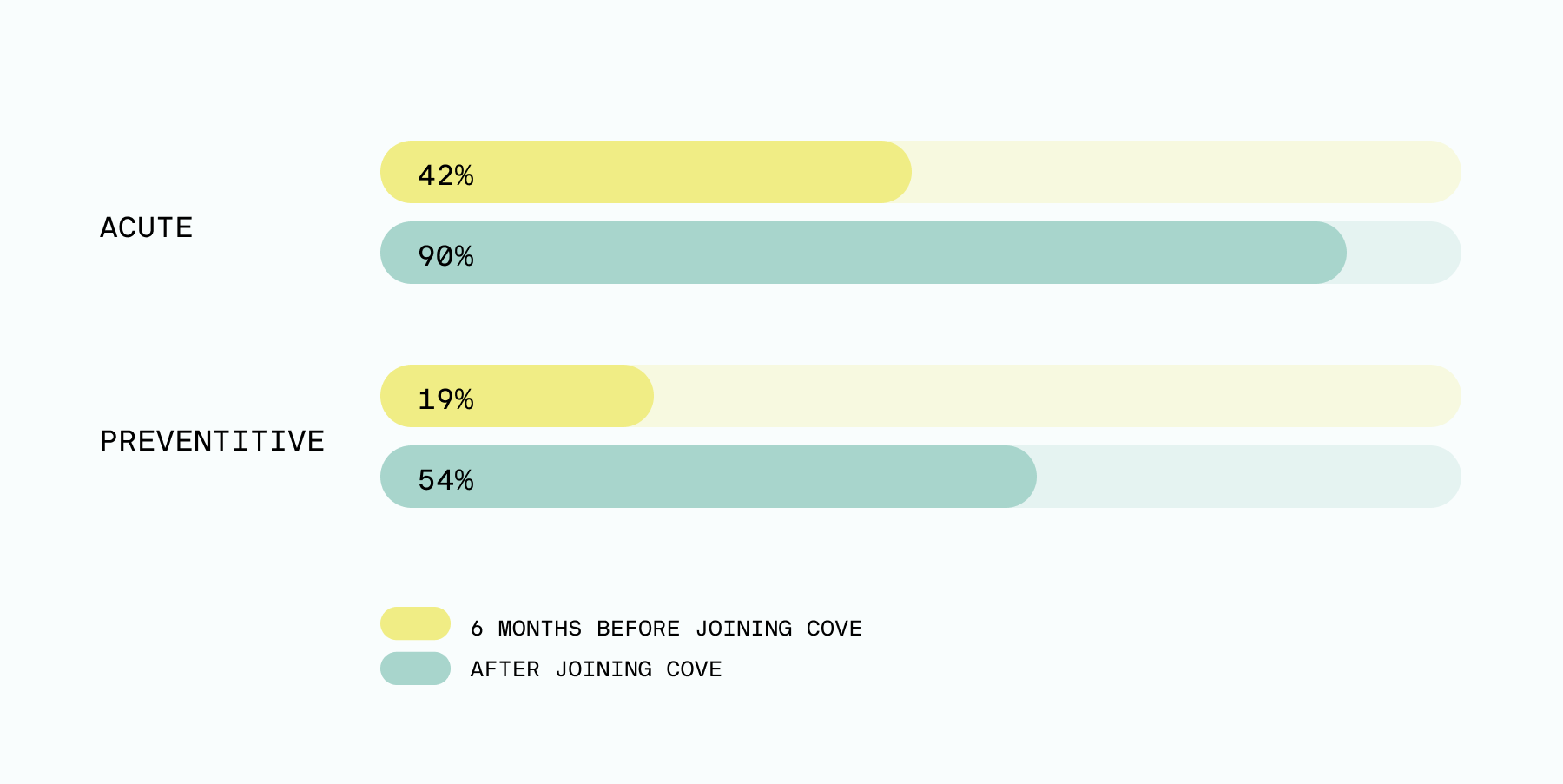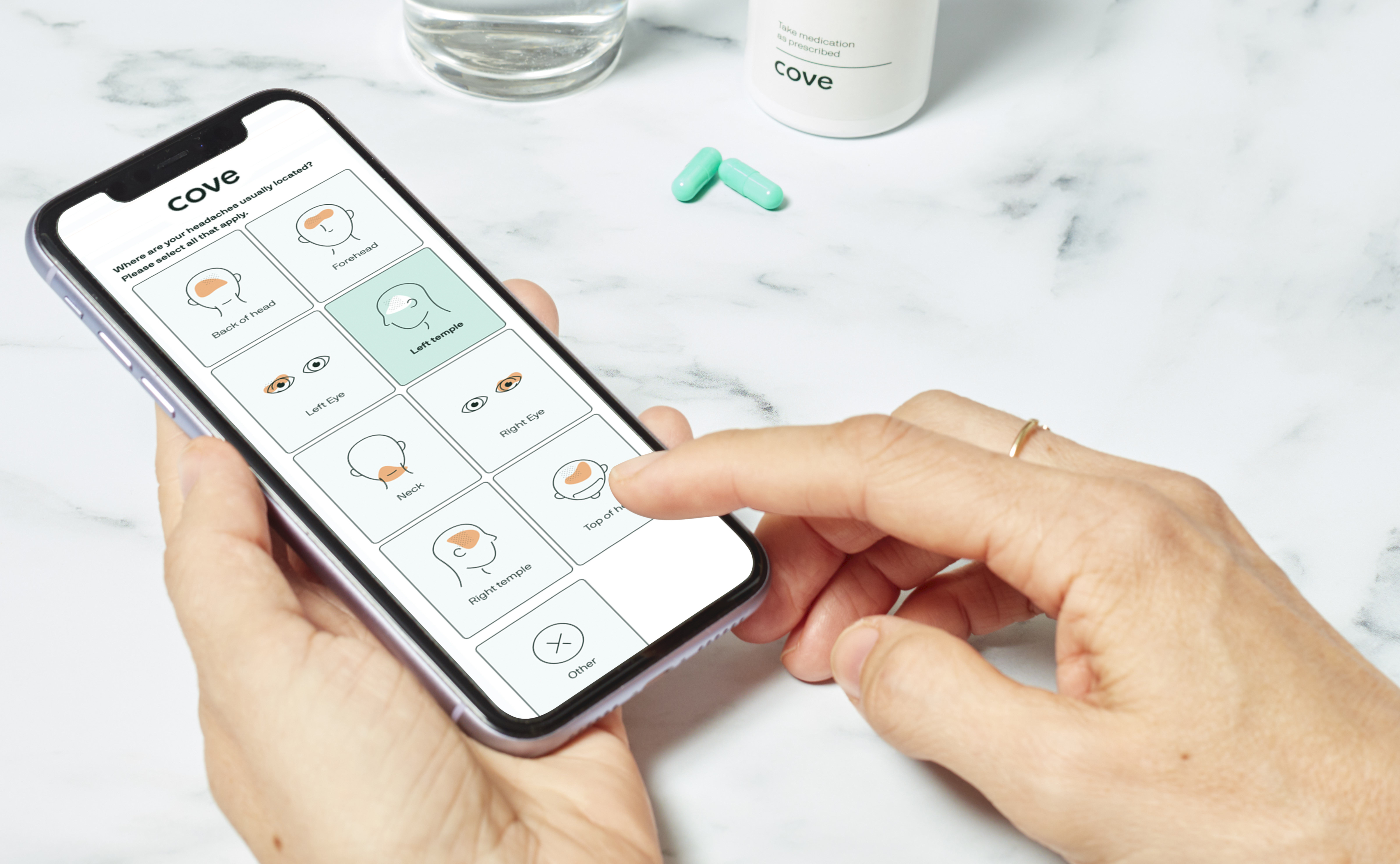If you’re here, we’re guessing you’ve heard a little bit about us—maybe you know that we offer more than 20 migraine treatments, or that our licensed medical providers give personalized treatment recommendations, or that we deliver medication directly to your door.
Maybe you’re considering starting your consultation, but are a little nervous to take the plunge. We get it! This is your healthcare we’re talking about, after all.
So we understand why you’d want evidence that we really can help you find the relief you deserve. That’s why we’ve conducted many studies analyzing Cove patient data to understand if Cove is increasing access to quality migraine care. Spoiler alert—we are!
These studies include data from thousands of Cove patients and have been accepted and presented at several leading headache conferences, including those organized by the American Academy of Neurology, Headache Cooperative of the Pacific, and American Headache Society. We’ve included citations and links to the studies below if you’re interested in taking a closer look.
Here’s what we’ve learned.
Cove provides high quality care that works.

- 64% of patients experienced reduced headache frequency (from an average of 10.8 to 7.5 monthly headache days).
- 75% of patients experienced reduced headache intensity (from an average of 7.5 to 5.8 on a 10-point pain scale) between intake and 3-month follow-up.
- For patients prescribed preventive medication, nearly half experienced at least a 50% reduction in monthly headache days.
- In addition, half of all patients experienced clinically meaningful improvements in their quality of life.
Cove provides access to equitable care.
We pride ourselves in the equitable outcomes our patients achieve. After 3 months of Cove, there were no statistically significant differences in the improvements in clinical outcomes between white patients and patients identifying as Black, indigenous, and/or people of color (BIPOC)—meaning that all patients received the same quality of care.
This is especially important because we know that we’re helping to solve an access issue for patients identifying as BIPOC. In our research we learned that unfortunately, prior to joining Cove, BIPOC patients were less likely to receive any treatment (acute or preventive) for their migraine (84% versus 89%) relative to white patients, and the disparity was more pronounced for preventive treatments (30% versus 38%).
The good news is that after joining Cove, all patients were prescribed treatment for their migraine at the same rates.
Cove increases access to ongoing care.
Have you ever felt that you lack access to specialty care for your migraine? Trust us, you’re not alone! 
- For 73% of patients, Cove is the only specialized headache care they have access to, and 38% don’t have access to any other provider.
- Nearly half of Cove patients do not have access to a single headache specialist in their county.
- After joining Cove, our patients had increased access to evidence-based migraine treatments compared to the 6 months prior.

And with Cove, you don’t have to wait to get the care you need! Cove patients are able to connect with a medical provider within days of their initial intake consultation. This is quite a difference from in-person care, where many patients wait 20+ days to connect with a specialist. What’s more, after joining Cove, patients have on-demand access to their care team via unlimited messaging.
Well, there you have it: Cove can help make migraine attacks less severe and frequent by providing access to effective, high quality, and equitable care.
We also believe that migraine care should be affordable, which is why we accept health insurance if you have it. We’re in-network with several insurers nationwide and we’re actively adding insurance carriers. If you’re ready to get your own personalized migraine treatment plan, you can get started here.
Need to learn a little bit more about us first? Check out our guide to how Cove works or reach out to us anytime at care@withcove.com.
Please note that these results are clinically and statistically significant. The information provided in this article is not a substitute for professional medical advice, diagnosis, or treatment. You should not rely upon the content provided in this article for specific medical advice. If you have any questions or concerns, please talk to your doctor.
References:
AHS 2021: Crystal, S., Mauskop, A., Rapoport, A.M., Cowan, R. and Bain, P., 2021, June. Leveraging telemedicine to improve access to evidence-based headache care. In HEADACHE (Vol. 61, pp. 66-67).
HCOP 2022: Crystal, S., Mauskop, A., Rapoport, A., Cowan, R., et al.., 2022, January. Asynchronous Telemedicine Platform Associated with Improved Clinical Outcomes and Reduced Disability in Patients with Migraine. Poster presented at: 15th Annual Headache Cooperative of the Pacific (HCOP) Winter Conference; Virtual.]
AAN 2022: Crystal, S., Mauskop, A., Rapoport, A., Cowan, R., Bain, P., Murdoch, E.F., Grigorenko, A., Miranda, K., Cohen, A. and Parikh, N., 2022, May. Direct-To-Consumer Asynchronous Telemedicine as a Solution to Improve Health Access for Underrepresented Minorities in Migraine Care (P11-2.001). In NEUROLOGY, 98 (18 Supplement) 600.
AHS 2022: Crystal, S., Mauskop, A., Rapoport, A., Cowan, R., Bain, P., Murdoch, E.F., Grigorenko, A., Miranda, K., Cohen, A. and Parikh, N., 2022, June. Direct-To-Consumer Asynchronous Telemedicine as a Solution to Mitigate Access and Health Disparities for Underrepresented Minorities in Migraine Care. In HEADACHE Vol. 62 (Suppl. 1, pp. 66).


